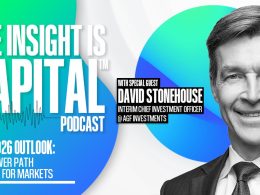by Jeffrey Kleintop, SVP, Chief Global Investment Strategist, Charles Schwab & Company
In what’s known as home bias, investors around the world tend to hold mostly their own country’s stocks—often at the expense of competing opportunities abroad.
Having little or no foreign exposure may not seem like a negative when your portfolio’s doing well, but an absence of international equities could mean missing out on potentially greater returns, true diversification across sectors, and a hedge against those years in which U.S. stocks struggle.
[Tweet "The Canadian stock market performs much like the energy sector. The Canadian economy is more reliant than most on natural resources. Even the banks are tied to the sector’s performance. ~ Jeffrey Kleintop"]Here’s what to consider when looking for opportunities abroad.
Sector diversification
First off, no one country offers full global stock market exposure. In fact, it’s surprising how much some major countries’ stock markets perform like a single sector of the global stock market.
- In the United States, the largest sector—technology—seems to drive overall performance. Indeed, the U.S. stock market acts a lot like one big tech fund.
- In Japan, the stock market closely tracks the global financial sector. That’s not to say financial companies dominate Japan’s stock market, but the influence of global financial conditions on all types of Japanese companies is evident in their performance.
- The Canadian stock market performs much like the energy sector. The Canadian economy is more reliant than most on natural resources. Even the banks are tied to the sector’s performance.
Accordingly, over the past decade the U.S. stock market performed best among the three as the world’s technology sector hit new heights. Japan posted relatively modest gains—in line with the global financial sector—and Canada proved the weakest of the trio, held back by the world energy sector, which posted a net loss over the past 10 years.
These examples illustrate the potentially dangerous lack of diversification inherent in having a portfolio with a large home bias—even if your home country happens to be among the world’s largest economies.
Dollar direction
If you hold a stock that is denominated in a currency other than the U.S. dollar, you can either benefit or suffer from changes in exchange rates. For example, in July 2020 European stocks fell 1.5% when measured in euros; however, because the dollar fell against the euro by 4.8% that same month, European stocks actually posted a 3.3% gain when measured in dollars.1
Thus, if the dollar is embarking on a long-term slide propelled by wide budget deficits and zero-interest-rate policy, it could act as a consistent boost to the performance of international stocks, as measured in dollars.
Change in leadership
Market leadership usually switches between U.S. and international stocks at the start of a new economic cycle:
- In the 1980s, international stocks—led by Japan—outperformed the United States for most of the decade.
- In the 1990s, the dot-com economy paved the way for U.S. stock market leadership.
- In the 2000s, international markets again took the lead—until the 2008–2009 global financial crisis restored the reign of U.S. stocks (see “And the winner is …,” below).
And the winner is …
U.S. and international stocks keep trading the title of greatest annualized total returns.


Source: Charles Schwab and Bloomberg, as of 10/27/2020. Annualized total return between cycle peaks measured by MSCI USA Index and MSCI EAFE Index. Past performance is no guarantee of future results.
These changes in leadership typically are triggered by a breakdown in fundamentals, such as unsustainably high stock valuations and dwindling earnings expectations. We’re currently seeing signs of fundamental deterioration in U.S. stocks—and as a result, international stocks may again take the lead.
Going global
If the U.S. stock market’s past decade of outperformance caused your portfolio to drift from its long-term allocation targets, now may be a good time to consider rebalancing your portfolio back toward international stocks. Fortunately, achieving global diversification has never been easier or less expensive; a broad international mutual fund or exchange-traded fund can give you exposure to a lot of sectors and stocks.
How much exposure you should have to international investments is another matter—one that depends on your risk tolerance and time horizon.
If your global allocation is out of line with your target, start making small shifts as part of your regular rebalancing routine. This gradual approach will allow you to adjust the balance of your portfolio over time rather than in one dramatic move that could result in a big tax bill or, worse, turn out to be poorly timed.
1Bloomberg, MSCI Europe Index, as of 10/27/2020.
Copyright © Charles Schwab & Company















